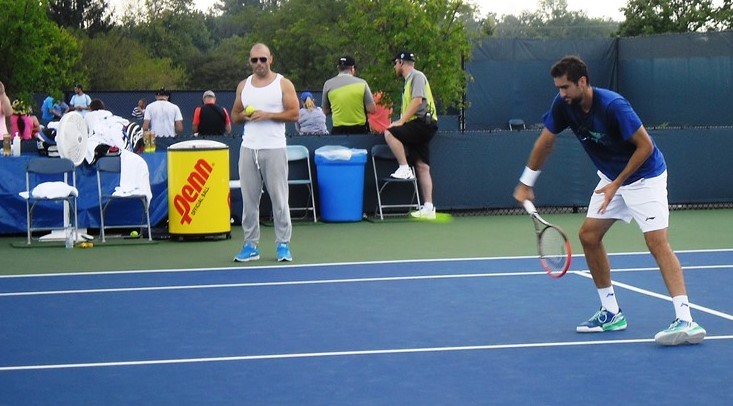Only a retrospective look after June 7th can provide the answer to the question in the title. The clay-court season does nevertheless give valuable indications on what to expect at the 16e arrondissement of Paris once matches begin seven days from now. And then there are the intangibles, always looming on the horizon, ready to influence outcomes. On the men’s side the three-out-of-five-set format will result in awkward scores during long matches (remember for example Marcel Granollers’ upset of the in-form Alexandr Dolgopolov by the score of 1-6 3-6 6-3 6-0 6-2?). It will also and bring into question injuries and physical endurance. On the women’s side, there will be question marks on whether some players who withdrew from clay-court events in the last few weeks can sustain two weeks of high-level competition or not. One intangible for both draws will be whether some past underdogs can manage the responsibility of being favorites in a Major.
The W.T.A. side
If the head-to-head record of Maria Sharapova vs. Serena Williams were not so lopsided, one could pencil the Russian’s name in as the clear favorite. What is quite underrated is how abundantly Sharapova wins matches on clay without playing a clay-court style tennis. Her success on this surface, with a style that favors hard, flat balls, and not much change of pace, would be the main topic of many tactical studies on different surfaces (read that as “for another day”). The good news for Maria is that she earned her way to the number-two ranking during the clay-court season and will not face Serena before the finals under any circumstances. Serena would love to see Sharapova’s name in the finals if she can get there herself, but that remains in doubt due to her less-than-stellar past appearances at Roland Garros, as well as her injury-related glitches during the spring. It seems like the bigger challenge for Serena will consist of going through the earlier rounds without damage, and then maximizing her performance in the later rounds.
Yet, there are potential challengers in the draw. Carla Suarez Navarro, freshly ranked inside the top 10 for the first time in her career, has proven capable of derailing her opponents with a wide arsenal of shots and her nerves of steel. While the spotlight in a Major will be a novelty for the Spaniard, her cool-headed approach to matches, as well as her high on-court IQ level, should be enough to negate the unfamiliar position of being the favorite against the vast majority of her opponents.
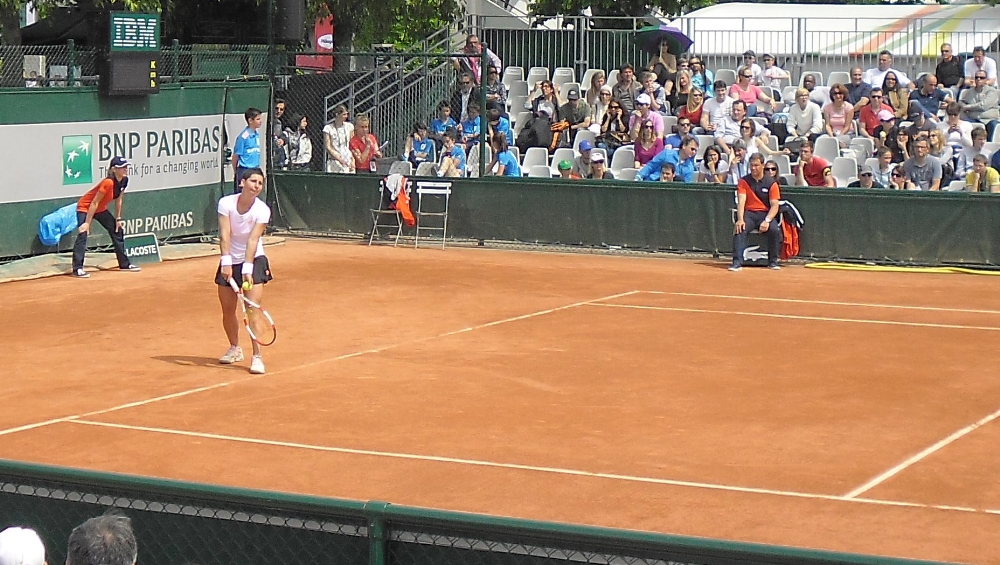 Will Carla still be demoted to the outside courts during Roland Garros after her success this year? (photo – during Roland Garros 2014)
Will Carla still be demoted to the outside courts during Roland Garros after her success this year? (photo – during Roland Garros 2014)
Simona Halep, another favorite despite having garnered no clay-court titles in 2015, will have one clearly defined goal in mind as the number three seed: make it to the semifinal and go through Sharapova or Williams, or both. After reaching the finals last year and raising the bar, Halep is one of the few players, maybe the only one other than Sharapova and Williams, who cannot leave Roland Garros satisfied unless she wins the title.
Outsiders, there are plenty. One that has not gotten any mention in the early reports is Timea Bacsinszky who has been on a tear this year. Yes, she is outside the top 20, and yes, she did get taken out by the sensational Daria Gavrilova in Rome. Past years have shown however that any player who experiences unprecedented success in the clay-court tournaments leading up to Paris can also produce an equal type of run during the two weeks. Finally, there are some familiar names who have gotten the job done at the top level during their career, but are coming into this French Open without much momentum. Svetlana Kuznetsova is a name that no favorite wants to encounter in the first week, especially on her best surface. Although their chances of winning are slim to none, Petra Kvitova can rise up to the occasion on a given day, and players such as Carolina Wozniacki, Ana Ivanovic, Jelena Jankovic, Angelique Kerber, and Sara Errani can extract valuable miles from the legs of those favorites who wish to remain fresh for the “final four” rounds.
The A.T.P. side
2015 has anything but concretized the dominance of the Big Four (yes, capitals are necessary in this case). Or should we distinguish the invincible Novak Djokovic from the other three? If you are one of the many followers of the tennis world who choose to do so, I cannot blame you. The number one player in the world has gone undefeated in four Masters 1000 tournaments (last two on clay) and the Australian Open. He is heading into Roland Garros sporting a 22-match win streak that ironically represents only the third longest one in his spectacular career. He outclassed his two biggest rivals Rafael Nadal and Roger Federer in the two finals on clay, Monte-Carlo and Rome. The improvement in his game – and I can’t underline this enough – since he became number one first in 2011, is something to behold. His serve is now a weapon, his drop shots are uncanny, and in the last few weeks, has even shown remarkable progress in the weakest area of his game, the overhead.
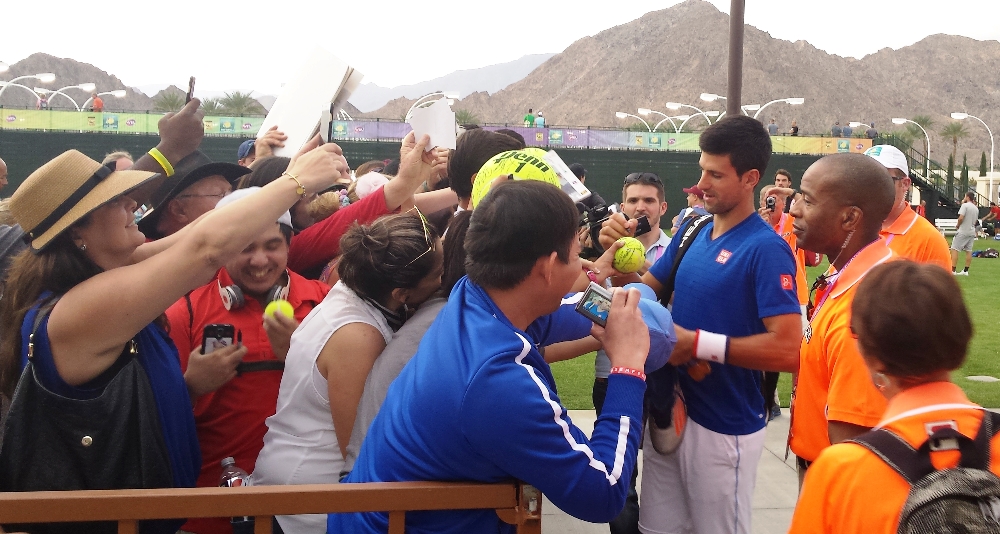 Novak made his fans in Indian Wells happy. Can he do the same for those in Paris?
Novak made his fans in Indian Wells happy. Can he do the same for those in Paris?
Having said that, I am not one of those followers. I cannot separate Novak as a clear favorite from the rest of the field at the French Open, not until a player, as a winner, shakes Rafa’s hand at the net, at the end of an official French Open round match. Nadal has lost before to Djokovic during the clay-court season, only to emerge on the last day at Philippe Chatrier court, as the winner of the only Major of the year on that surface. In fact, this sequence has taken place more than once (2011 and 2014). Last year, Novak entered Roland Garros as the top seed, with a victory against Rafa in Rome, and still came up short. Nadal’s 6-0 record against Djokovic in Roland Garros (three of those in the last three years), and the fact that he lost only one match ever on the red clay of Roland Garros – yes, you read it correctly, ONLY ONE, his record is a stupefying 66-1!! – simply do not allow me to place Djokovic above the Spaniard as the clear favorite. Defeating Nadal by winning three sets against him, in a period of less than a few hours, would still be in the fantasy category for anyone if were not for that one surreal day in 2009, when Robin Soderling banged away warp-speed winners for exactly three hours and a half.
I will thus modify my version to saying that I place Nadal and Djokovic above everyone else, with Federer and Andy Murray slightly below them, followed by a few names that can go no further than possibly spoil the late-round meetings between these four. Roger Federer enters Roland Garros as the second best player of 2015, and even Andy Murray’s late form on clay cannot change that. Roger has earned that seeding, deservedly, by winning three titles, the Istanbul title on clay, and reaching the finals of two Masters 1000 tournaments. The second one of those was today on the clay courts of Foro Italico in Rome, where he was dominated by the lunar play of Djokovic. Murray for his part arrives to Paris with two titles and zero defeats on red dirt (he withdrew from Rome after winning his first match). That is an unprecedented accomplishment for the Scot who, despite often playing well on the surface prior to this year, could never earn a title on it. Yet, Murray and Federer are two of the three reasons – and the only ones in my opinion – that could stop the eventual Nadal vs. Djokovic final. The third is the much-debated seeding question.
Nadal will amazingly be seeded number seven in the very tournament that he won nine times in the last ten years. A combination of rare bad form in the first few months of 2015 and several months of injury-related absence on the ATP Tour in the second half of 2014 has led to Rafa’s lowest ranking ever at the time of Roland Garros. This means that Nadal could face any of the top four seeds as early as in the quarterfinals. The tournament organizers refused to utilize the skewed seeding system that Wimbledon does by taking into consideration the player’s success on the particular surface. Now the ideal situation for them would be that Nadal falls into Berdych’s quarters so that the possibility of semifinals consisting of the Big Four remains alive, and not to mention, likely. It would be a disaster to say the least, if Rafa goes in Novak’s quarters, meaning that by the semifinals, we are guaranteed that one of the two biggest favorites of the tournament, the very two that dominated it for the last three years, will not be present on the last weekend of the event. Rafa could also draw Murray’s quarter of the draw, in which case the next question will beckon: are they on Djokovic’s side or Federer’s side? If they are on Djokovic’s side, Berdych and Federer would rejoice (not publicly of course). If they are on Federer’s side, Federer fans may become the biggest Murray fans for one day if their man makes it to the semis and awaits the winner of Murray-Nadal. These questions will keep the minds of tennis fans, as well as experts, busy until the Main Draw is revealed on May 22nd, at which time all forms of prognostics will inundate social networks and the media.
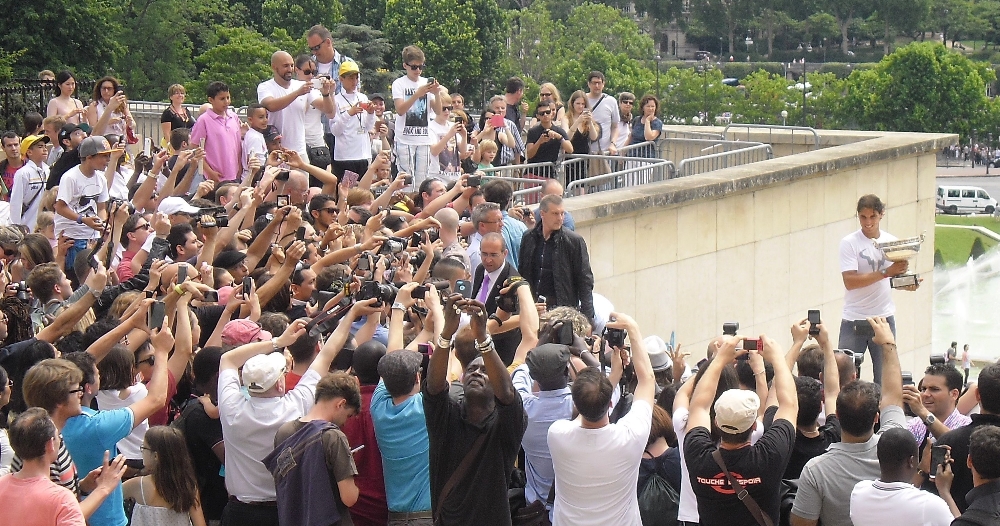 Can Rafa do this again for the 10th time in 11 years, even as the 7th seed in the draw?
Can Rafa do this again for the 10th time in 11 years, even as the 7th seed in the draw?
So, who could play the role of the spoiler to this Big Four party? One of them is Gaël Monfils whom the crowd could galvanize to a higher level of play. He is a name that neither Andy Murray nor Roger Federer would want to see in their quarters, although for Nadal and Djokovic, I doubt it would make much difference. There is also the loose cannon by the name of Fabio Fognini who holds two clay-court wins over Nadal this year, a feat accomplished only by Djokovic until this year. The Italian does not lack the talent to push any player to the limit on a given day, yet his seeding will likely force him to go through several gritty matches to make any major noise, and by now, everyone knows that grit is not Fabio’s forte. It would be fascinating to see him match up with Nadal for the third time on clay, and it could happen as early as the first week, considering their seeding.
Kei Nishikori remains the biggest threat to the Big 4 and the only one who could reach the final weekend without it being considered a stunning upset. Kei will need some help on the day of the draw. As a below-the-top-four seed, it is unlikely that he could go through three big names to lift the trophy on the last Sunday. The two guys on whom everyone has given up any hope of winning Roland Garros are strangely ranked 5 and 8 in the world. The problem with Tomas Berdych and David Ferrer is their miserable record against the Big 4. Yes, each has reached a Major final before (Berdych in Wimbledon 2010 and Ferrer in Roland Garros 2013) but one required a shocking upset (Berdych defeated Federer in 2010) and the other required one of the luckier draws in recent history (2013 French for Ferrer).
Milos Raonic is recovering from surgery and his participation next week is in doubt. Stan Wawrinka could give major headaches to one of the big names, but will not be more than a nuisance to the ensemble of the top favorites. Stan did oust Rafa in Rome, but that remains the one shining moment in his season since he won a title in Rotterdam in February. He is also breaking the cardinal rule for a contender in Majors by participating in a tournament taking place the week preceding a Major, the ATP Geneva event. One guy that did record two wins over Wawrinka in the clay-court season is Grigor Dimitrov. The Bulgarian has however underperformed in light of to the expectations following his successful 2014 campaign. Two Spanish players, Fernando Verdasco and Feliciano Lopez, have proven capable of winning against the best at some points in their careers, and don’t count them totally out. Gilles Simon could also make a big name feel sick in the stomach, but whether that would last more than a couple of sets remains improbable. But in any case, the above-mentioned players, outside of the Big Four, will have to catch fire, of a colossal size, to have any chance of belonging to the “active participant” category in the last few days of Roland Garros.
There are some “far-and-away” outsiders who could find their form and have career tournaments, such as Dominic Thiem, Roberto Bautista Agut, David Goffin, and Richard Gasquet – sorry dear Americans, no John Isner or Jack Sock -, but my use of the adjective “career tournaments” in this case does not point to a shocking upset of one of the Big Four members. With a bit of luck, they could march into the second week of the tournament, and at the most, could reach the quarterfinal rounds.
As for me, I am looking forward, for now, to my favorite portion of the Majors: the qualifying rounds. That is where emotions fly high, away from the scrutiny of cameras for the most part, and where the importance of winning a round often translates into career-high accomplishments, or in the case of a loss, into crushing blows. Enjoy the week, the Parisian party is near.
Note: Click here to stay tuned to MT-Desk on Twitter
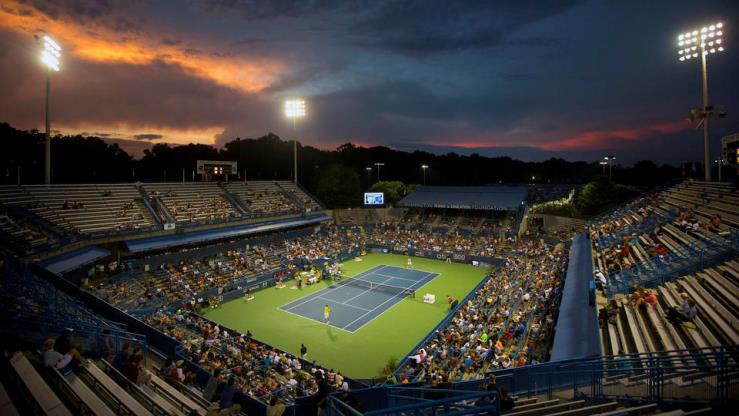

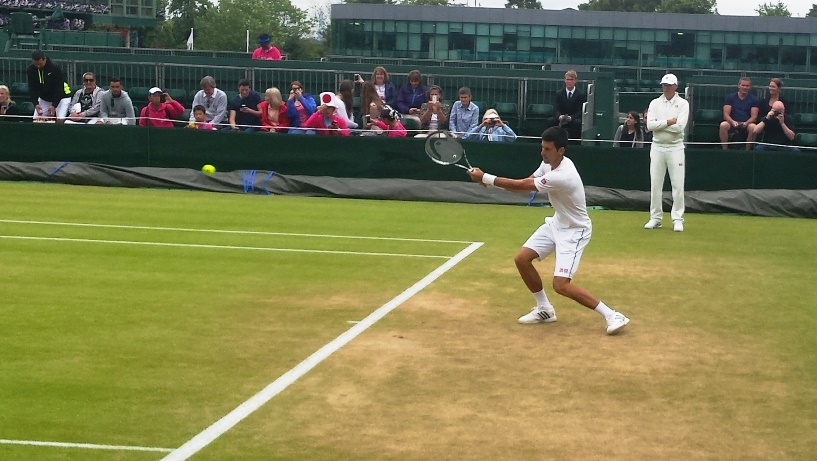
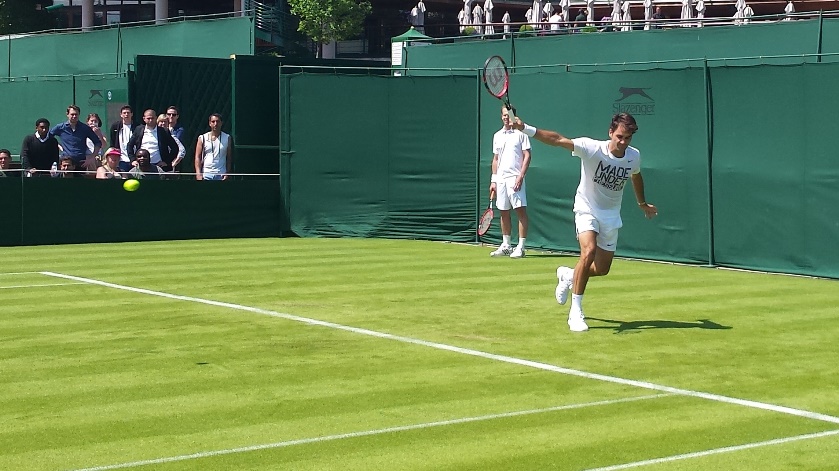
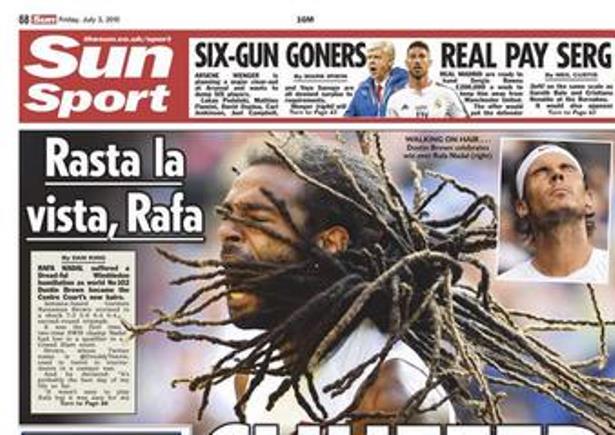
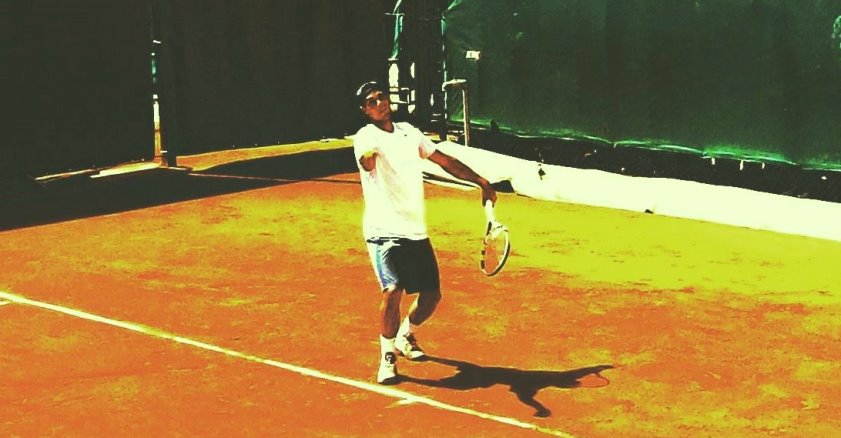 Rafa at his best: practicing hard…
Rafa at his best: practicing hard…


